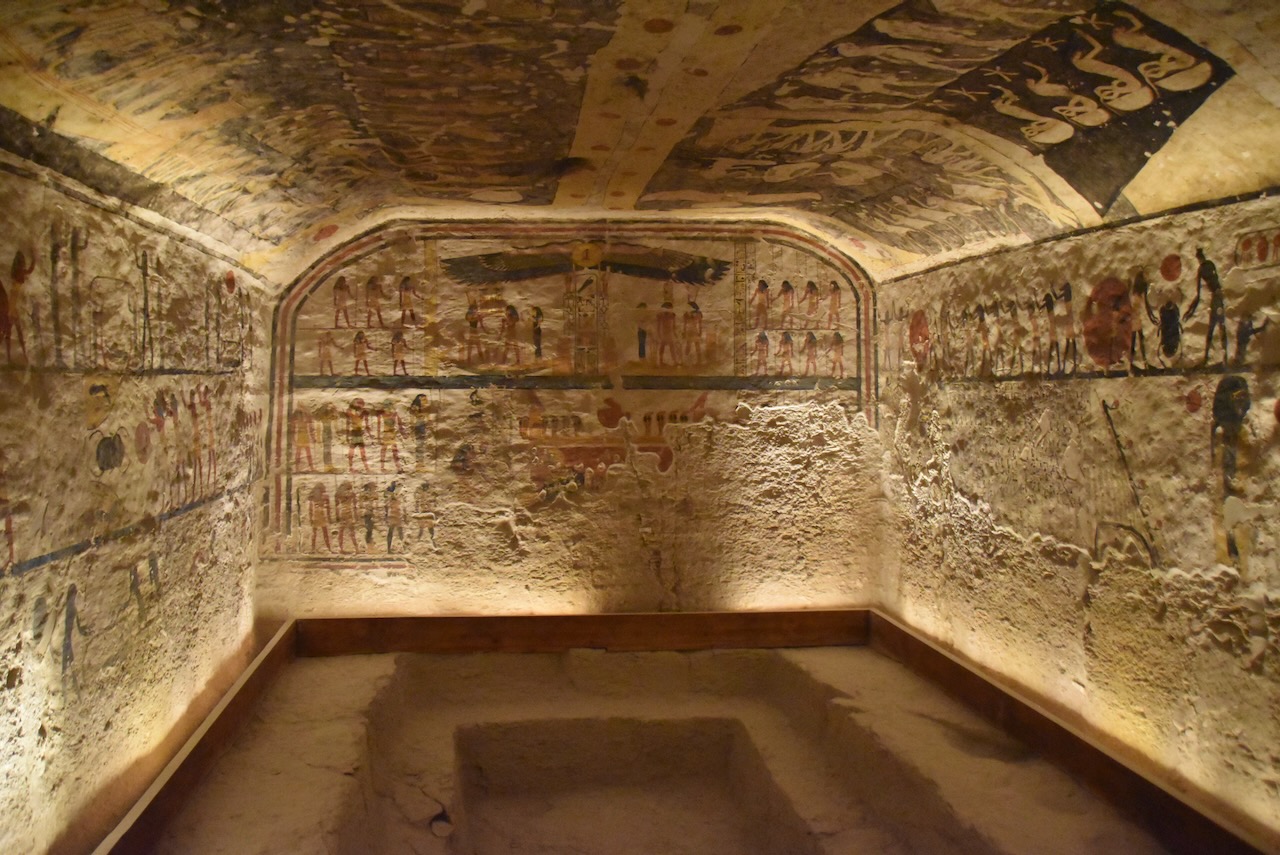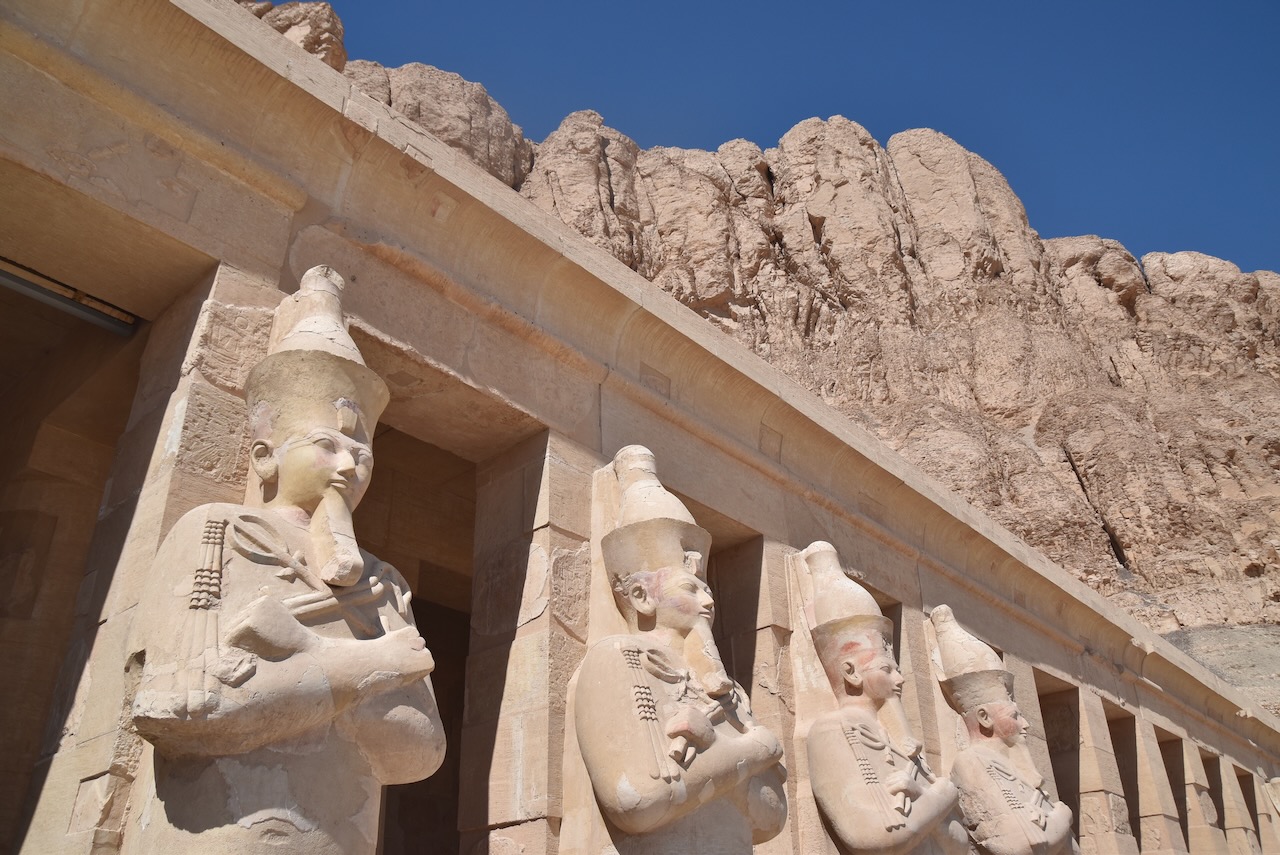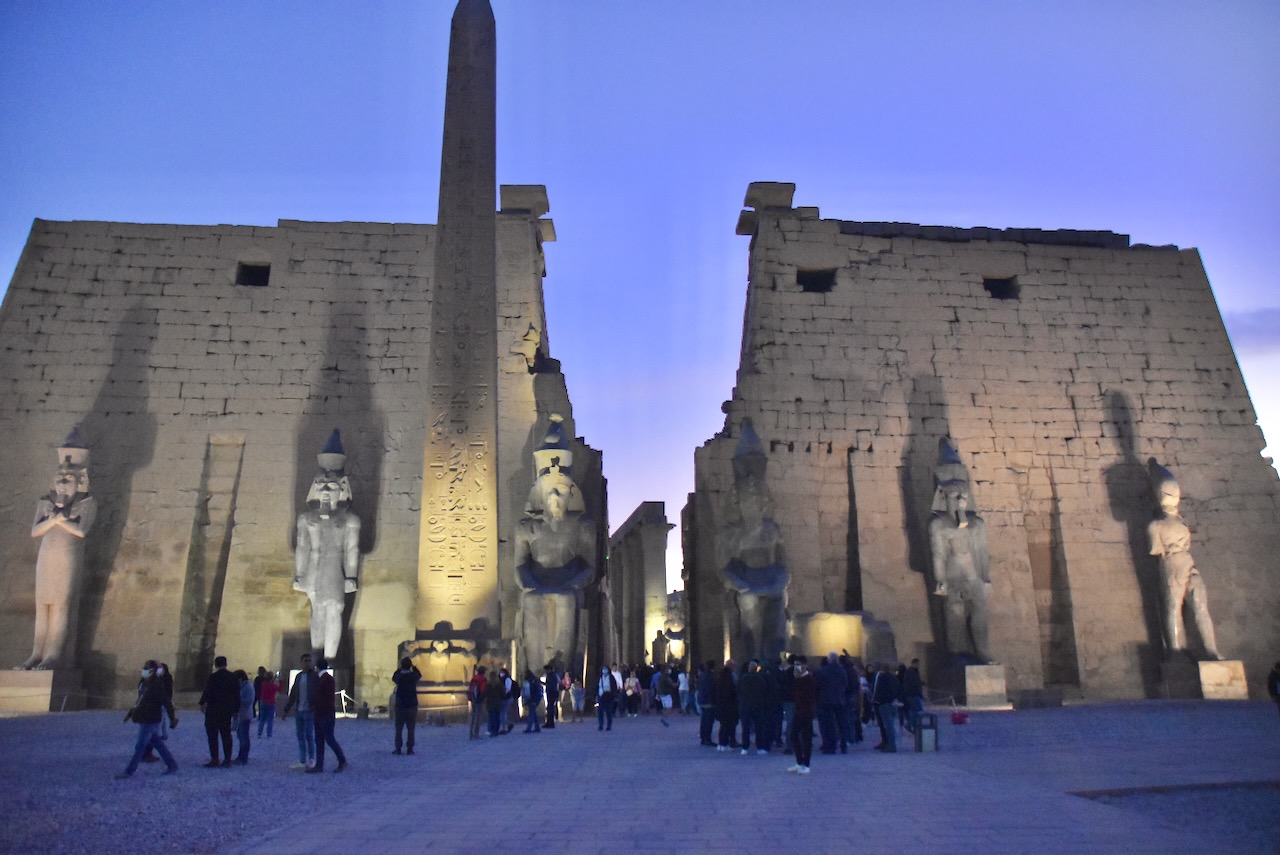DAY 6 – SUNDAY, FEBRUARY 20: LUXOR: VALLEY OF THE KINGS, TEMPLE OF MEDINET HABU, COLOSSI OF MEMNON, TEMPLE OF HATSHEPSUT, LUXOR TEMPLE
For those doing just the Israel portion of the trip, the trip began today as folks gathered at various airports en route to the
DAY 6 – SUNDAY, FEBRUARY 20: LUXOR: VALLEY OF THE KINGS, TEMPLE OF MEDINET HABU, COLOSSI OF MEMNON, TEMPLE OF HATSHEPSUT, LUXOR TEMPLE
For those doing just the Israel portion of the trip, the trip began today as folks gathered at various airports en route to the Ben Gurion Airport in Tel Aviv. For those of us in Egypt, this was our last full day. We saw many incredible sites in Luxor. While the highly-anticipated hot-air balloon ride was canceled because of weather, we still had a full day. The sun was bright all day, with perfect temps in the low 70s. As we began the day, we read from Exodus 14.
Valley of the Kings
Following breakfast, we left the hotel at 7:30 and headed directly to the Valley of the Kings. 63 pharaohs have been buried here since the start of the New Kingdom. We went into three tombs: Ramses III (the last Pharoah of the 20th Dynasty), Tausert/Setnakht (a dual tomb of the last Pharaoh of the 19th Dynasty and the first Pharoah of the 20th Dynasty), and Ramses IX (8th Pharaoh of the 20th Dynasty, with the tomb built in 1111 BC). The well-preserved colors of the wall reliefs were stunning to see. The religious focus within the Egyptian belief system upon the after-life is plain to see in all these tombs! It took between six months and three years to build these tombs, some more complex than others. They were built while the Pharoah was still living. Nine of our went into the famous tomb of Tutankhamen. His mummy is on display here as well as his sarcophagus.
Alabaster Shop/Store
Close by are many alabaster shops. We went to one whose owner was quite the comedian. It was interesting to see how some of the vessels are made. The final products made from stone are impressive.
Temple of Hatshepsut
On the opposite side of the cliff of the Valley of the Kings is the Temple of Hatshepsut. The temple was built in 1470 BC. Hatshepsut was most likely the Pharaoh’s daughter who rescued Moses (Exodus 2). She was the daughter of Thutmose I and reigned for over 20 years. She was despised by those who succeeded her, with her image and cartouches eliminated and/or scratched away (perhaps both Thutmose III and Amenhotep II did this?).
Temple of Medinet Habu
The last temple on the western side we saw was the Medinet Habu. This was a dedicatory temple built in honor of Ramses III. Depicted on the pylons is the defeat of his enemies, including the Nubians and the “Sea Peoples” (i.e. the Philistines of the Bible). Ramses defeated the Sea Peoples in 1170 BC. The wall reliefs show Ramses holding the heads of his defeated enemies by the hair. He also cut off their hands and penises to humiliate them.
“Today was our last day in Egypt. The area of Luxor was incredible. From colorful tombs to huge temples. Some even went into King Tut’s tomb at the Valley of the Kings! cOver these last few days, seeing the world of the ancient Egyptians was impressive.”
Colossi of Memnon
We passed by the Colossi of Memnon. These are two huge figures that are displayed at the Temple of Amenhotep III. They are about 60 feet high.
Temple of Luxor / Flight back to Cairo
In mid afternoon, we crossed back to the eastern side where we enjoyed lunch at our hotel before packing up and driving to the Luxor Temple. This temple is primarily in honor of Ramses II who reigned 67 years and lived until 91 years of age (1303-2113 BC). He was the great Egyptian pharaoh of the 13th century BC. From here we drove to the Luxor Airport for our flight back to Cairo.
Upon landing, we said goodbye to Max, our knowledgeable guide. After checking in to our airport hotel, we got the required Covid test as we fly to Tel Aviv later in the morning tomorrow. It was a great trip to Egypt! Now we look forward to traveling through Israel!





